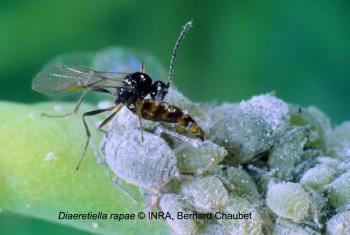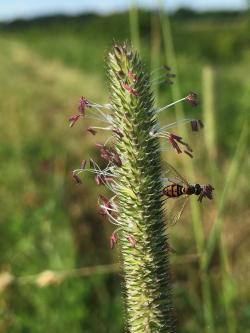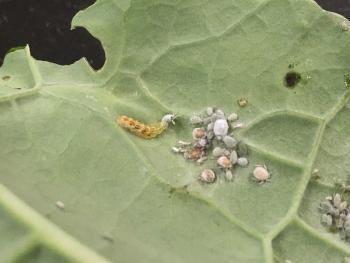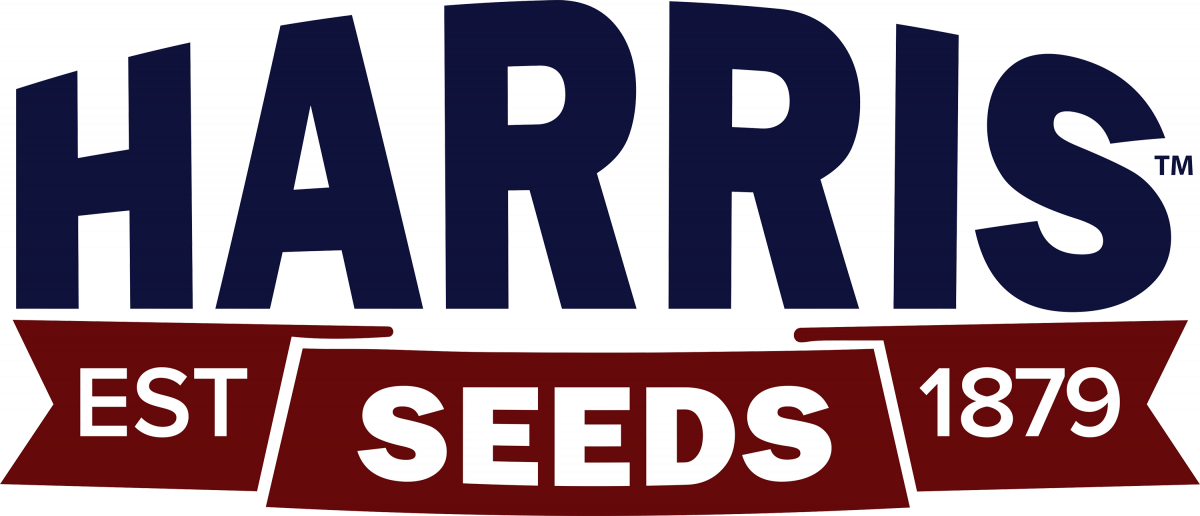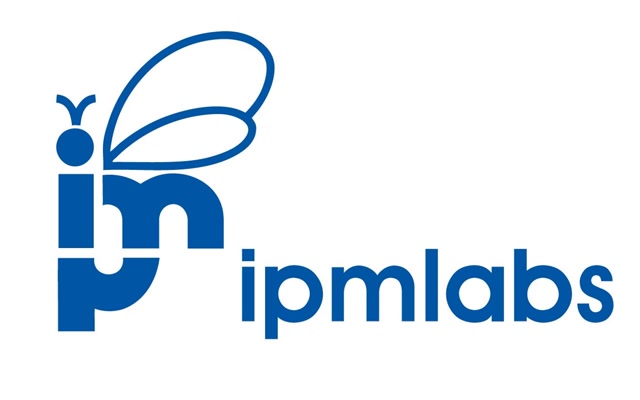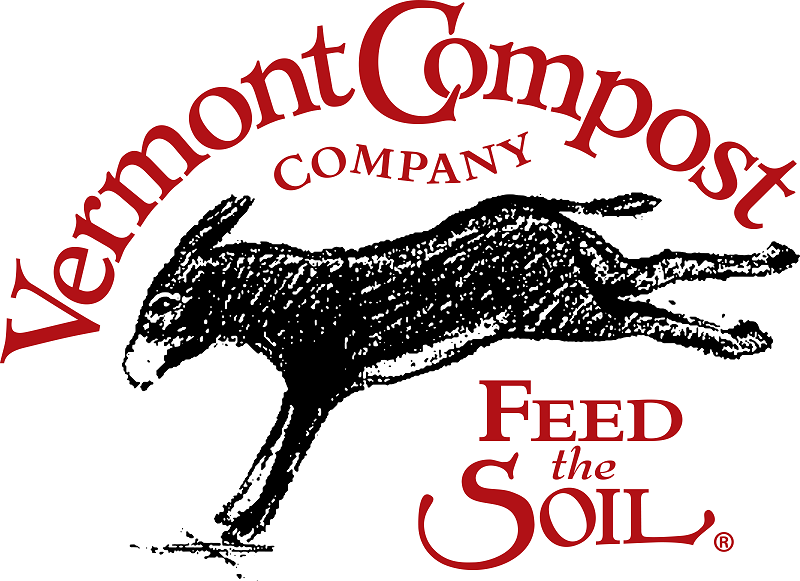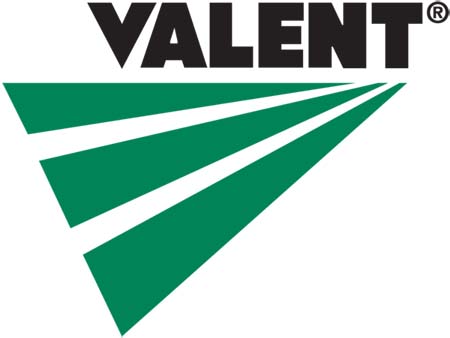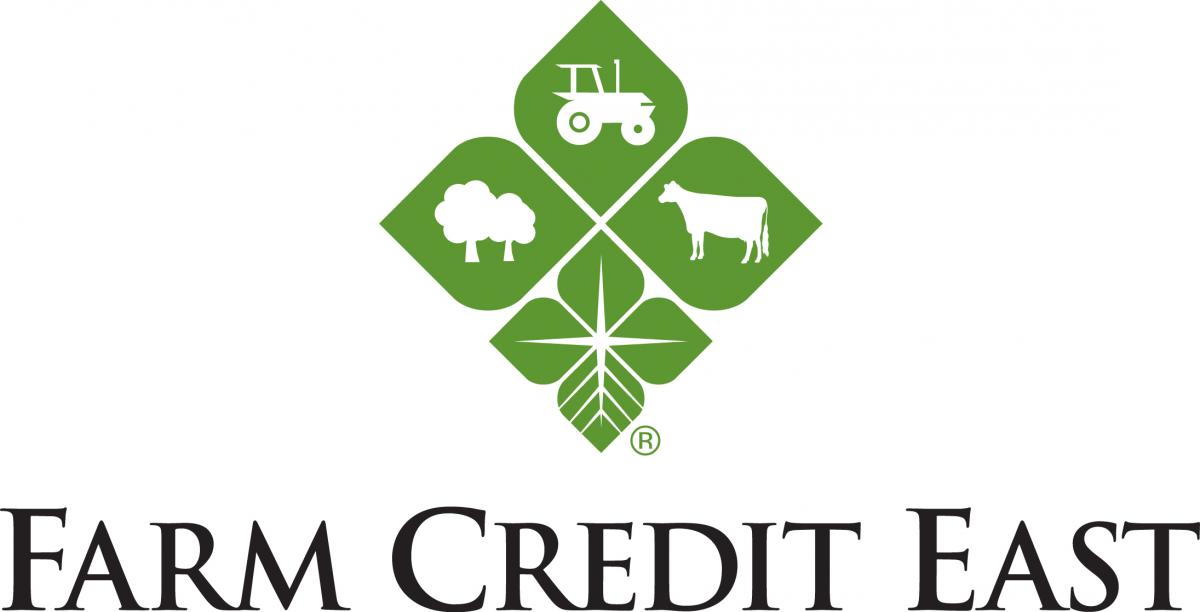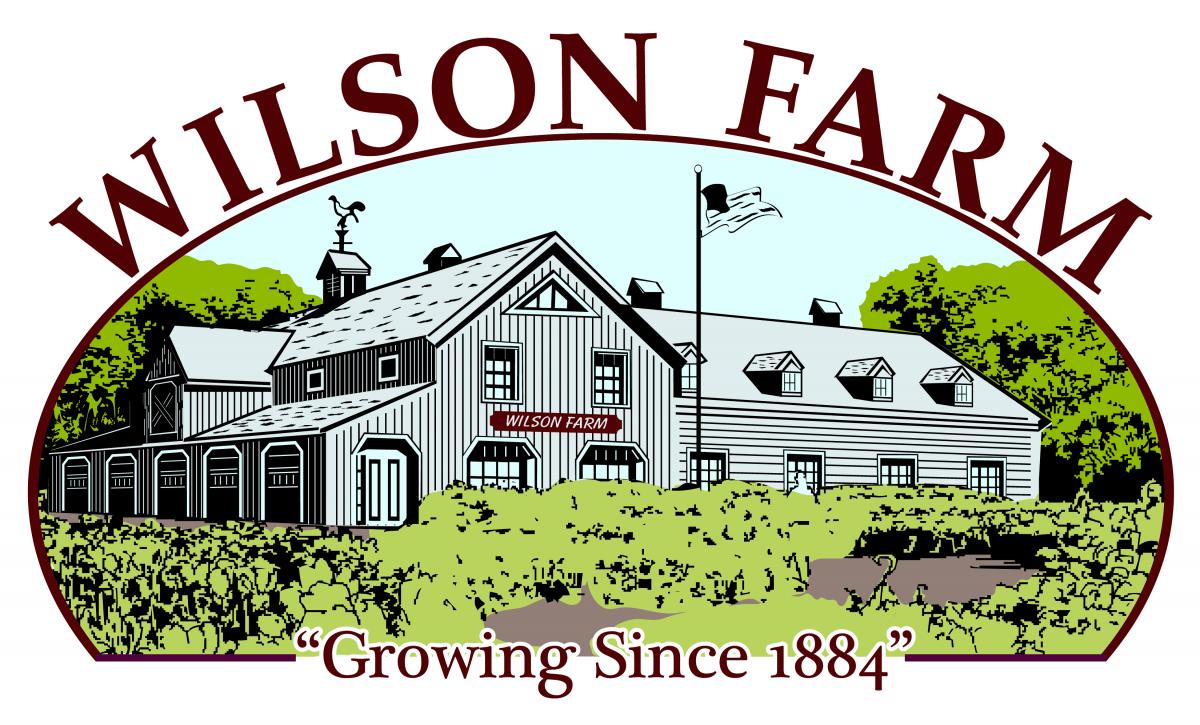To print this issue, either press CTRL/CMD + P or right click on the page and choose Print from the pop-up menu.
Click on images to enlarge.

Crop Conditions
 Summer and fall crops alike are still coming in—tomatoes, peppers, and sweet corn—as well as fall crops like potatoes, winter squash, cabbage, broccoli, and cauliflower. Early sweet potato and leek harvests are underway. Garlic and storage onions are done curing and ready to be sorted, cleaned, and sold. Temperatures seem to have dropped for good at this point, and daylengths are are getting shorter. Most growers have shade cloth on their high tunnels all summer long to help control excessive heat and sunburn in tunnel tomatoes and peppers. As long as temperatures have started to drop, shade cloth can be removed by mid-August, since daylight hours will have started to shorten and the risk of sunscald is lower. Shade cloth can be taken down ahead of a cooler/cloudier stretch of weather to allow plants to acclimate back to full-sun conditions.
Summer and fall crops alike are still coming in—tomatoes, peppers, and sweet corn—as well as fall crops like potatoes, winter squash, cabbage, broccoli, and cauliflower. Early sweet potato and leek harvests are underway. Garlic and storage onions are done curing and ready to be sorted, cleaned, and sold. Temperatures seem to have dropped for good at this point, and daylengths are are getting shorter. Most growers have shade cloth on their high tunnels all summer long to help control excessive heat and sunburn in tunnel tomatoes and peppers. As long as temperatures have started to drop, shade cloth can be removed by mid-August, since daylight hours will have started to shorten and the risk of sunscald is lower. Shade cloth can be taken down ahead of a cooler/cloudier stretch of weather to allow plants to acclimate back to full-sun conditions.
We’re excited to have a cut flower twilight meeting coming up, solely focused on dahlia production! Join us at Grant Family Farm in West Newbury, MA on September 24, to hear from farmers Alice and Chris about their dahlia production—stay for food and discussion afterwards. Click here, or see the Events section for more details. The UMass Urban Agriculture Extension Team also has 3 upcoming twilight meetings this fall, at their three Mentor Farms across the state—the first will be at Nordica Street Community Farm in Springfield on September 19. We hope to see you there!
We’re at the point in the season where there are few new diseases and pests to report. Foliar diseases of tomato (early blight, Septoria leaf spot, and Stemphylium, and gray mold and leaf mold in tunnels), brassicas (Alternaria leaf spot, black rot, downy mildew), and cucurbits (downy mildew, powdery mildew, Plectosporium) are all out there, continuing to develop. Caterpillars in brassicas continue to be active, as well as squash bugs, striped cucumber beetles, and the corn caterpillars. We’re keeping our eyes peeled for signs of allium leafminer and will put out an alert as soon as we see it—let us know if you see oviposition marks in your leeks (umassveg@umass.edu or 413-577-3976).
|
table 1. Squash Vine borer Pheromone Trap captures for week ending September 4
|
|
|---|---|
|
Trap location
|
SVB
|
|
Whately
|
0 |
| Lexington | 2 |
| North Easton | 2 |
| Sharon | 0 |
|
Westhampton
|
0 |
|
Spray thresholds: Thick-stemmed cucurbits only. 5 moths/week for bush-type cucurbits. 12 moths/week for vining cucurbits.
|
|
Sweet corn
We are seeing slightly increased corn earworm trap captures from last week, but even so, many locations are not trapping enough to warrant a spray. The second flight of European corn borer is over, with only 1 location catching moths this week. Fall armyworm continues to be captured in low numbers at some locations; whorl stage corn at sites where FAW is being captured should be scouted for ragged feeding damage, and an insecticide should be applied if more than 12% of plants are infested.
| Table 2. GDDs & Sweet corn pest trap captures for week ending September 4 | |||||||
|---|---|---|---|---|---|---|---|
| Nearest Weather station |
GDD (Base 50°F) |
Trap Location | ECB NY | ECB IA | FAW | CEW | CEW SPRay interval* |
| Western MA | |||||||
| North Adams | 2317 | n/a | n/a | n/a | n/a | n/a | n/a |
| Richmond | 2119 | n/a | n/a | n/a | n/a | n/a | n/a |
| South Deerfield | 2555 | Whately | 0 | 0 | 5 | 23.5 | 4 days |
| Chicopee Falls | 2592 | Granby | - | - | - | - | - |
| Granville | 2234 | Southwick | 0 | 0 | 0 | 1 | no spray** |
| Central MA | |||||||
| Leominster | 2365 | Lancaster | 0 | 0 | 2 | 27 | 4 days |
| Northbridge | 2383 | Grafton | 0 | 0 | 0 | 5 | 5 days |
| Worcester | 2392 | Spencer | 0 | 0 | 1 | 2 | 6 days |
| Eastern MA | |||||||
| Bolton | 2409 | Bolton | 0 | 0 | 2 | 4 | 5 days |
| Stow | 2412 | Concord | 0 | 0 | 1 | 1 | no spray** |
| Lawrence | 2470 | Haverhill | 5 | 0 | 0 | 3 | 6 days |
| Ipswich | 2438 | Ipswich | 0 | 0 | 0 | 0 | no spray** |
| Harvard | 2423 | Littleton | 0 | 0 | 0 | 0 | no spray** |
| Sharon | 2356 | North Easton | 0 | 0 | 0 | 14 | 4 days |
| Sharon | 0 | 0 | n/a | 43 | 4 days | ||
| - | ND | Sherborn | 0 | 0 | 1 | 0 | no spray** |
| Providence, RI | 2472 | Seekonk | 0 | 0 | 2 | 83 | 4 days |
| Swansea | 0 | 0 | 6 | 29 | 4 days | ||
|
ND - no GDD data for this location - no numbers reported for this trap n/a - this site does not trap for this pest * If 2+ days above 80°F occur, shorten spray interval by 1 day. ** If CEW trap captures are below 1.4 moths/week, scout block for ECB and FAW caterpillars and make a pesticide application if 12% of plants in a 50-plant sample are infested. |
|||||||
| Table 3. corn earworm spray intervals | ||
|---|---|---|
| Moths/Night | Moths/Week | Spray Interval |
| 0 - 0.2 | 0 - 1.4 | no spray |
| 0.2 - 0.5 | 1.4 - 3.5 | 6 days |
| 0.5 - 1 | 3.5 - 7 | 5 days |
| 1 - 13 | 7 - 91 | 4 days |
| Over 13 | Over 91 | 3 days |
Contact Us
Contact the UMass Extension Vegetable Program with your farm-related questions, any time of the year. We always do our best to respond to all inquiries.
Vegetable Program: 413-577-3976, umassveg@umass.edu
Staff Directory: https://ag.umass.edu/vegetable/faculty-staff
Home Gardeners: Please contact the UMass GreenInfo Help Line with home gardening and homesteading questions, at greeninfo@umext.umass.edu.
Sweet Potato Harvest & Storage
 Fall is around the corner, and growers are starting to dig around to see how big their sweet potatoes have gotten under all of those vines. Sweet potatoes can be harvested whenever they reach a marketable size, but if you’re looking to maximize yields, they should be dug as late as possible in the fall, according to research done by Becky Sideman at UNH Extension. While vines can tolerate a light frost, the roots should come out before a hard freeze sets in, usually before mid-October. For more information on Becky’s research, including a list of varieties trialed in New Hampshire (albeit 10 years ago, now), see the full reports: Growing Sweet Potatoes in New Hampshire and Sweet potato early harvest study, 2014. Sweet potatoes require different storage conditions than other common New England root crops. Once harvest is completed, curing and storage considerations continue to be important.
Fall is around the corner, and growers are starting to dig around to see how big their sweet potatoes have gotten under all of those vines. Sweet potatoes can be harvested whenever they reach a marketable size, but if you’re looking to maximize yields, they should be dug as late as possible in the fall, according to research done by Becky Sideman at UNH Extension. While vines can tolerate a light frost, the roots should come out before a hard freeze sets in, usually before mid-October. For more information on Becky’s research, including a list of varieties trialed in New Hampshire (albeit 10 years ago, now), see the full reports: Growing Sweet Potatoes in New Hampshire and Sweet potato early harvest study, 2014. Sweet potatoes require different storage conditions than other common New England root crops. Once harvest is completed, curing and storage considerations continue to be important.
Harvesting
Sweet potato roots will continue to grow until the leaves are killed by frost or until soil temperatures fall consistently below 65°F, whichever comes first. Time of harvest is often determined by digging up a few representative plants and assessing the percentage of roots in different size classes—the crop can be harvested whenever the majority of the roots are the desired size. If a hard frost occurs, the tops of the plants turn black. At that point, it is imperative to harvest as quickly as possible regardless of root size. Tuber chilling injury can occur if soil temperatures drop below 55°F. It is also important to avoid holding sweet potatoes in saturated, low-oxygen soil conditions prior to harvest, as this promotes rapid decay in storage. Take care when harvesting; unlike white potatoes, which form thickened, protective skins that bind tightly to the underlying tissue, sweet potatoes have thin skins that can be easily damaged by equipment or rough handling.
Curing
Any abrasions or wounds created at harvest can lead to rot in storage. Curing immediately after harvest is recommended when sweet potatoes will be held in storage for later sales. Curing minimizes damage and loss during storage by healing harvest wounds. During the curing process, a corky periderm layer is formed below damaged areas, which prevents invasion by pathogens and limits water loss. To cure sweet potatoes, keep roots at 82-86°F and high relative humidity (90-97% RH) for 4-7 days. Respiration rate is high during curing, so ventilation is important to remove CO2 and replenish O2. A greenhouse can provide good curing conditions.
A freshly harvested sweet potato is more starchy than it is sweet. During curing and storage, starches in the sweet potato are converted to sugars, improving flavor. The change in sugars is measurable within one week, but it is recommended to wait at least three weeks after harvest before consuming sweet potatoes to allow for more conversion of starches to sugars and maximum eating quality.
Storage
Sweet potatoes can maintain excellent quality for up to a year if proper storage conditions are achieved. The ideal storage conditions for sweet potato are the same as for winter squash; moderately warm (55-60°F) and 60-75% relative humidity. Like winter squash, sweet potato suffers chilling injury at temperatures below 55°F and injury increases with lower temperatures or longer periods of exposure. Signs of chilling injury include shriveled, sunken, dark areas on the tuber surface, and blackening of tubers when cut open. ‘Hardcore’ is a physiological disorder cause by chilling, in which areas of the tuber become hard—the condition is not apparent in fresh roots but appears after cooking. Because chilling injury is irreversible and makes tubers unmarketable, growers should take particular care to avoid field curing, or storage conditions that dip below 55°F.
--UMass Extension Vegetable Program
Cabbage Aphids
 We are seeing cabbage aphid populations building up in some brassica fields now. This pest has been a significant problem in some years and less so in others, typically becoming an issue in late-season brassicas. Infestations can stunt plants and reduce yield but the physical presence of the aphids in Brussels sprout buds or on leafy greens is often the biggest concern. The best control is achieved by scouting early in the season and treating crops when populations are small and isolated. Cabbage aphids will feed on any brassica crop, but Brussels sprouts are hit particularly hard as they provide aphids with hiding spots among the buds where they can’t be reached by insecticide sprays and plenty of time to build up.
We are seeing cabbage aphid populations building up in some brassica fields now. This pest has been a significant problem in some years and less so in others, typically becoming an issue in late-season brassicas. Infestations can stunt plants and reduce yield but the physical presence of the aphids in Brussels sprout buds or on leafy greens is often the biggest concern. The best control is achieved by scouting early in the season and treating crops when populations are small and isolated. Cabbage aphids will feed on any brassica crop, but Brussels sprouts are hit particularly hard as they provide aphids with hiding spots among the buds where they can’t be reached by insecticide sprays and plenty of time to build up.
Identification
Both nymphs and adults are grayish-green with short, dark-colored cornicles, but they usually appear dusty and grayish-white due to a fine, white, powdery secretion that covers their bodies. Dense colonies may develop, particularly on the undersides of leaves.
Life Cycle
Cabbage aphids only infest crops and weeds in the brassica family. Cabbage, cauliflower, broccoli, and Brussels sprouts are most severely affected, but other brassica crops may become infested. We usually start to see small numbers of cabbage aphids in brassicas mid-summer, but populations grow slowly, initially, and often don’t reach damaging levels until early fall. Cabbage aphids overwinter as eggs which are laid on the undersides of leaves of the same plants that were fed on during the summer. This differs from the life cycle of many aphid pests of vegetables, where eggs are laid and overwinter on alternate hosts outside the field. Eggs typically hatch in April. Nymphs feed and develop into reproductive females who can produce live young without mating. Winged adults disperse with wind and infest new crops. There are multiple summer generations and potential for huge population growth, especially where long-season crops (e.g. Brussels sprouts) are infested early.
Damage
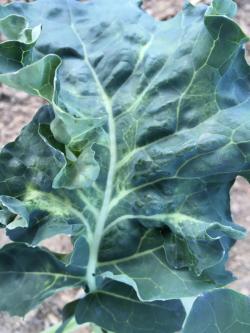 Cabbage aphids prefer to feed on young leaves, flower buds, or seed stalks in the upper part of the plant, as well as in developing Brussels sprout buds. Heavy feeding injury results in wrinkled and downward-curling leaves, yellowing, and reduced growth. Colonies often develop on the undersides of leaves, and the corresponding area on the top of the leaf turns a blotchy yellow. The biggest issues requiring control tend to be contamination of marketable parts of the plant with aphids or honeydew, a sugary, sticky secretion produced by the aphids. Cabbage aphids can also transmit cauliflower mosaic and cabbage ring spot virus, among other viruses; transmission is non-persistent, with virus particles passed to new plants by aphid probing.
Cabbage aphids prefer to feed on young leaves, flower buds, or seed stalks in the upper part of the plant, as well as in developing Brussels sprout buds. Heavy feeding injury results in wrinkled and downward-curling leaves, yellowing, and reduced growth. Colonies often develop on the undersides of leaves, and the corresponding area on the top of the leaf turns a blotchy yellow. The biggest issues requiring control tend to be contamination of marketable parts of the plant with aphids or honeydew, a sugary, sticky secretion produced by the aphids. Cabbage aphids can also transmit cauliflower mosaic and cabbage ring spot virus, among other viruses; transmission is non-persistent, with virus particles passed to new plants by aphid probing.
Management
Biological Control
Natural enemies can suppress cabbage aphid populations but may not be able to control high densities that can occur in cool fall weather. Predators of cabbage aphids include syrphid fly larvae and ladybugs. The tiny ichneumonid wasp, Diaeretiella rapae, is a parasitoid of cabbage aphid—the female wasp lays an egg within an aphid and the resulting larva consumes the aphid from within, creating a round, bronze-colored “mummy”. These natural enemies can be attracted to brassica fields by planting flowers that provide them with nectar and pollen. Research done at both UMass and the University of New Hampshire in 2018-20 found that the flowers of sweet alyssum, dill, cilantro, and false Queen Anne’s lace (Ammi majus) attracted a high number of syrphid flies and D. rapae.
Cultural Control
If cabbage aphids are present on your farm, each of these tactics alone will likely not prevent infestation of your crop. If these cultural control practices are implemented along with early, regular crop scouting, outbreaks can be controlled.
- Incorporate crop residues immediately after harvest or, for late-fall brassicas, as early as fields allow the following spring.
- Control brassica weeds in or near fields.
- Inspect transplants to be sure they are aphid-free. Early-season aphid infestations may originate from greenhouse infestations.
- Use reflective mulch to repel aphids.
- Scout for cabbage aphids weekly beginning in early June. If isolated patches of infested plants are found, removing those plants from the field and destroying them can help avoid aphid spread.
Chemical Control
Use selective products when controlling other brassica pests (e.g. Bt products to control caterpillar pests) to conserve beneficial insects including predators and parasitoids of cabbage aphid. If cabbage aphids are a consistent problem on your farm, systemic insecticides applied at planting or sidedressing may eliminate early infestations. Scout weekly to determine the percentage of infested plants, starting before harvested portions of the plant form. Treat if >10% of the plants are infested with aphids, especially after heads or sprouts begin to form. Alternatively, select 10 leaves at 10 sites for a total of 100 leaves per field, and treat if >20% have aphids. Spray coverage of all leaf surfaces, buds, and new growth is key—hollow cone nozzles can help achieve good coverage of the undersides of leaves. Include a spreader-sticker to prevent insecticides from beading up and rolling off of waxy brassica leaves. Waiting until there are heavy outbreaks or until just before harvest makes it difficult to prevent loss of marketable yield.
Research from the University of New Hampshire showed that cabbage aphid control using OMRI-listed materials can be achieved, but you must spray early and often while population levels are still low. Azadirachtin (e.g. AzaGuard, Azatin, Azatrol) + pyrethrins (e.g. PyGanic) + insecticidal soap (e.g. M-Pede) used in a tank mix or in rotation has been found to be the most effective organic program for controlling cabbage aphids. Azadirachtin + pyrethrins was previously available as the pre-mix Azera; this product is no longer on the market, but the two individual materials can be tank mixed. Horticultural oils (e.g. SuffOil-X, JMS Stylet Oil, others) will also function to smother aphids—Dan Gilrein of Cornell Cooperative Extension recommends a solution of 2% horticultural oil + 0.5% M-Pede. All of the above insecticides work by contact, so thorough coverage is essential.
For conventional products, Dan Gilrein writes: “Movento was particularly effective in one cabbage trial at the Long Island Horticultural Research and Extension Center. Fulfill and Beleaf are also highly effective and aphid-specific materials—all three have helpful translaminar or systemic activity. Alternatives include Assail and Admire Pro/generic spray. Note that the Bravo Weather Stick label prohibits tank mixing with DiPel, Latron B-1956, or Latron AG-98 and warns about combinations with other pesticides and surfactants unless a test shows the mix is safe. Cabbage aphids affected by treatment may not immediately appear dead—check after 2 days to verify efficacy.”
--Adapted from the New England Vegetable Management Guide by the UMass Extension Vegetable Program
News
New UMass Extension Newsletter: The Pollinator Buzz!
Interested in learning about pollinator health, outreach events, and conservation opportunities? Subscribe to receive the latest updates via The Pollinator Buzz, a new quarterly newsletter from UMass Extension. Typical features will include native plant and bee species profiles, hot topics in bee conservation, upcoming event announcements, and more!
See http://ag.umass.edu/resources/pollinators/native-pollinators-conservation/pollinator-buzz for more info, and to subscribe!
2024 Organic Cost Share Reimbursement Application Now Open
Application deadline: December 16, 2024
MDAR is authorized by the USDA – Agricultural Marketing Service (AMS) to reimburse certified Organic Crop and Livestock Producers and Handlers (processors) for the Federal 2024 Fiscal Year. Reimbursements are limited to 75% of an operation’s certification costs, up to a maximum of $750 of certification, for the program year. Organic operations certified for crops, wild crops, livestock and handlers are eligible to participate.
Events
Urban Agriculture Mentor Farms Fall Twilight Meeting Series
Come ring in fall at the concluding events of the 2024 Urban Ag Mentor Farm Program. The UMass Extension Urban Ag Team and the Urban Ag Mentor Farms will discuss what they learned from their pest management and technical assistance work together this season. These events will also feature conversations with UMass Extension Vegetable Team specialists and each of the events will close out with a light dinner.
Nordica Street Community Farm
When: Thursday, September 19, 4:30-6:30pm
Where: 7 Nordica St., Springfield, MA 01004
Registration: Please register in advance so we know how much food to order. Click here to register.
Regional Environmental Council
When: Thursday, October 3, 4:30-6:30pm
Where: 42 Lagrange St. (rear), Worcester, MA 01610
Registration: Coming soon!
Urban Farming Institute
When: Thursday, October 10, 3-5pm
Where: 487 Norfolk St, Mattapan, MA 02126
Registration: Please register in advance so we know how much food to order. Click here to register.
These events are supported by the National Institute of Food and Agriculture, U.S. Department of Agriculture, through the Northeast Sustainable Agriculture Research and Education program.
Dahlia Farm Walk at Grant Family Farm
When: Tuesday, September 24, 4-6pm
Where: Grant Family Farm, 866 Main St, West Newbury, MA
Registration: Free, but please register in advance here.
Join us in West Newbury on September 24 for a farm walk all about dahlias. We’ll tour Grant Family Farm and hear from farmers Alice and Chris. The UMass Extension vegetable program will also host a listening session to learn about your challenges and needs related to growing cut flowers.
Twilight Meeting: Climate Impacts on Weed Management and Soil Health - South Deerfield, MA
When: Tuesday, October 8, 2024, 4-6pm, with a light supper to follow
Where: UMass Crop & Livestock Research & Education Farm, 89 River Rd., South Deerfield, MA, 01373
Registration: Free! Please register in advance so we can order enough food. Click here to register.
How are climate change and hotter temperatures affecting our soils? Often, practices like reducing tillage and cover cropping are recommended to improve soil health, reduce risk of topsoil loss and enhance resilience to drought and flood—practices that can also affect weed management. UMass Extension will discuss general impacts of climate change on soil health and highlight current research on updating recommendations for planting timing and overwintering survival of cover crop species in MA. Maria Gannett, UMass Extension Weeds Specialist, will relate these strategies to how they can impact weed management.
1 pesticide recertification credit is available for this program.
This event is co-sponsored by CISA as part of their Adapting your Farm to Climate Change Series.
Food Safety & Storage in a Warmer New England
When: Tuesday, October 15, 4-5:30 pm
Where: Kitchen Garden Farm, 131 S. Silver Lane, Sunderland, MA, 01375
Registration: Free, registration info coming soon!
Join UMass Extension, CISA, and UVM Extension for a climate-themed twilight meeting at Kitchen Garden Farm in Sunderland, MA!
- Lilly Israel and Max Traunstein, Owners, Kitchen Garden Farm - Tour of the farm's postharvest and food production facilities, and discussion on how the farm is considering climate change and food safety in its operations.
- Chris Callahan, Extension Associate Professor, UVM Extension Ag Engineering - Precooling resources, sizing CoolBots and coolers, condensation management, and guidance on sorting/culling product for storage
- Lisa McKeag, Extension Educator, UMass Extension - Overview of potential climate impacts on food safety
This event is co-sponsored by CISA as part of their Adapting your Farm to Climate Change series.
Save the Date! Gaining Ground Farm Tour
When: Thursday, October 17, 2024, 4-6pm
Where: Gaining Ground, 341 Virginia Rd., Concord, MA 01742
Join New Entry and UMass Extension for a farm tour of Gaining Ground Farm in Concord, MA!
Registration and event details coming soon.
Vegetable Notes. Maria Gannett, Genevieve Higgins, Lisa McKeag, Susan Scheufele, Alireza Shokoohi, Hannah Whitehead, co-editors. All photos in this publication are credited to the UMass Extension Vegetable Program unless otherwise noted.
Where trade names or commercial products are used, no company or product endorsement is implied or intended. Always read the label before using any pesticide. The label is the legal document for product use. Disregard any information in this newsletter if it is in conflict with the label.
The University of Massachusetts Extension is an equal opportunity provider and employer, United States Department of Agriculture cooperating. Contact your local Extension office for information on disability accommodations. Contact the State Center Directors Office if you have concerns related to discrimination, 413-545-4800.
